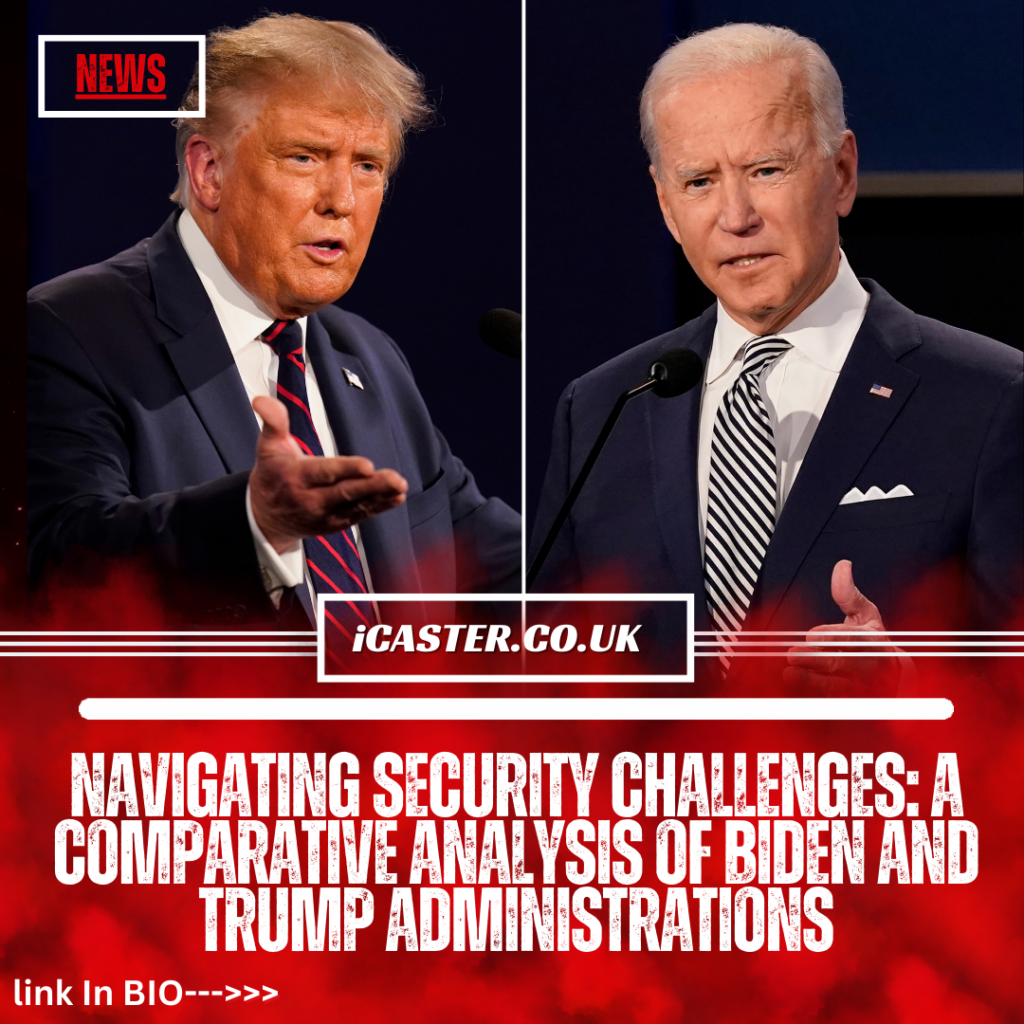INTRO:
Security Analysis on Biden and Trump Administrations, In the realm of politics and governance, security challenges play a crucial role in shaping the trajectory of nations. The United States, under the leadership of Presidents Joe Biden and Donald Trump, faced their fair share of security concerns during their respective tenures.
This article aims to delve into the intricacies of the security landscape during both administrations, analyzing the unique challenges confronted and the approaches taken to address them.
By examining the security issues faced by Biden and Trump, we can gain valuable insights into the priorities, strategies, and outcomes of their administrations in maintaining national security.
From cyber threats and domestic extremism to terrorism and geopolitical tensions, this article provides a comparative analysis of the security challenges faced by these two distinctive presidencies.
Join us as we navigate the complexities of security challenges and explore the contrasting approaches of Biden and Trump in safeguarding the nation’s interests.
Section 1: Security Challenges Faced During Joe Biden’s Tenure
As the United States transitioned from the Trump administration to the Biden administration, the focus on national security remained paramount. However, each presidency faced unique security challenges, and in this article, we will examine the security landscape during Joe Biden’s tenure.
1. Cybersecurity Threats:
During Joe Biden’s presidency, cybersecurity emerged as a significant concern. With increasing reliance on digital infrastructure, the United States faced numerous cyber threats from state-sponsored actors and criminal organizations. The SolarWinds breach and ransomware attacks on critical infrastructure highlighted the vulnerabilities that needed immediate attention.
2. Domestic Extremism:
Another key security challenge during Biden’s tenure was the rise of domestic extremism. In the wake of the January 6th Capitol insurrection, addressing the threat posed by extremist groups became a top priority. The administration implemented measures to enhance intelligence sharing, bolster law enforcement efforts, and work towards countering radicalization.
3. Terrorism and Global Security:
Joe Biden faced the ongoing threat of terrorism both domestically and internationally. The withdrawal of U.S. troops from Afghanistan led to concerns about the potential resurgence of terrorist groups. Additionally, the administration had to navigate complex relationships with countries such as Iran and North Korea, addressing nuclear proliferation and regional stability.
Section 2: Security Challenges Faced During Donald Trump’s Tenure
Donald Trump’s presidency was marked by a distinct set of security challenges that shaped his tenure in the White House. Let’s delve into some of the key security issues faced during his term.
1. Border Security:
One of the primary security concerns during Trump’s presidency was border security. The administration focused on immigration policies and border enforcement, aiming to curb illegal immigration and enhance national security. The construction of the border wall and changes to immigration protocols were key components of these efforts.
2. Geopolitical Tensions:
Trump’s administration faced significant geopolitical challenges, including strained relations with countries like China, Iran, and North Korea. Trade disputes, nuclear proliferation concerns, and regional conflicts posed complex security dilemmas. The administration pursued a robust foreign policy approach, emphasizing America’s interests and renegotiating international agreements.
3. Counterterrorism Measures:
While terrorism remained an ongoing threat during Trump’s tenure, the administration sought to recalibrate the approach inherited from previous administrations. The focus shifted towards targeted operations and a reduction in troop presence in conflict zones. The remnants of ISIS and ongoing terrorist activities required continued vigilance.

Conclusion: Reasons Why Donald Trump Had the Best Security Approach
While both Joe Biden and Donald Trump faced unique security challenges during their presidencies, it is important to note that the assessment of the “best” approach is subjective and dependent on individual perspectives. However, Donald Trump’s administration can be seen as having certain strengths in the security realm.
1. Strong Emphasis on Border Security:
Donald Trump prioritized border security and took substantial measures to address immigration concerns. His administration’s efforts to control illegal immigration and fortify the border demonstrated a commitment to protecting national interests and maintaining security.
2. Assertive Foreign Policy:
Trump’s administration pursued an assertive foreign policy, renegotiating trade agreements and challenging traditional diplomatic norms. While controversial, this approach aimed to safeguard American interests and address security challenges emanating from geopolitical tensions around the world.
3. Focus on Counterterrorism Strategies:
The Trump administration sought to streamline counterterrorism efforts by emphasizing targeted operations and reducing troop presence in long-standing conflict zones. This approach aimed to adapt to the evolving nature of terrorism while maintaining a vigilant stance against potential threats.
CONCL:
Tho, each presidency faced its own set of security challenges, and the assessment of their effectiveness is a matter of perspective. Donald Trump’s tenure showcased a strong emphasis on border security, an assertive foreign policy, and a recalibrated approach to counterterrorism. However, it is essential to consider a comprehensive evaluation of all aspects when discussing the overall security approach of any administration.
I do enjoy the way you have framed this matter and it does indeed offer me personally some fodder for thought. Nonetheless, through what precisely I have witnessed, I just wish as the reviews pack on that people today remain on issue and don’t get started on a tirade of some other news of the day. Anyway, thank you for this excellent point and although I can not go along with the idea in totality, I regard your standpoint.
I went over this web site and I conceive you have a lot of fantastic information, saved to bookmarks (:.